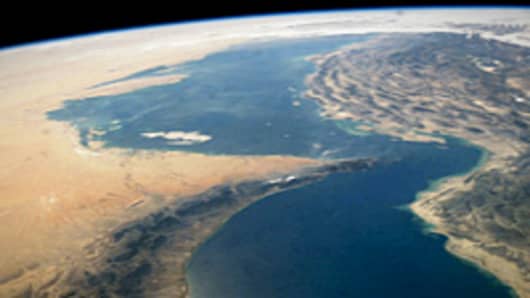Saudi Arabia and the United Arab Emirates have opened new pipelines bypassing the Strait of Hormuz, the shipping lane that Iran has repeatedly threatened to close, in a move that will reduce Tehran’s power over oil markets.
The quiet opening of the pipelines comes amid heightened diplomatic tensions over Tehran’s nuclear program. Iran’s oil production has fallen to its lowest in more than 20 years due to the impact of US and European sanctions, prompting Tehran to repeat its threats to shut down the strait, the conduit for a third of the world’s seaborne oil trade.
The new links will more than double the total pipeline capacity bypassing the strait to 6.5m barrels per day, or about 40 percent of the 17 million bpd that transits Hormuz.
The geopolitical importance of the strait is such that Cyrus Vance, former US secretary of state, called it “the jugular vein of the West”. Over the weekend Ali Fadavi, naval commander in Iran’s elite Revolutionary Guard Corps, said Tehran had the ability to “not allow even a single drop of oil to pass” the strait.
Abu Dhabi and Riyadh say the pipelines are not a direct response to Tehran’s threats. But oil traders and scholars say they are clear counterweight.
“Multiple pipelines would partly negate the Iranian threat to block [the Strait of] Hormuz,” said Rafael Kandiyoti, senior research fellow at Imperial College London and author of Pipelines: Oil Flows and Crude Politics. “Showing increasing pipeline capacity suits the purposes of Saudi Arabia.”
The projects come as oil priceshave risen back above $100 a barrel in part due to falling Iranian oil exports.
The UAE on Sunday loaded the first tanker from its new 370-kilometer pipe linking the oilfields near Abu Dhabi with the port of Fujairah in the Indian Ocean. The $3.5 billion pipeline, which has been delayed several years, has a capacity of 1.5 million bpd, or about 65 percent of the country’s exports. “This is a very strategic project,” said Mohammed al-Hamli, UAE oil minister, in a ceremony in Fujairah.
At the same time, Saudi Arabia has quietly converted a natural gas pipeline to allow it to carry crude oil. The 1,200-kilometer long pipeline, which could transport up to 2m bpd—or 25 percent of the country’s oil exports—runs from the oilfields of the Eastern province, on the Gulf coast, to a terminal near Yanbu in the Red Sea.
The 48-inch pipe was built during the Iran-Iraq war in the early 1980s, when both sides were attacking oil tankers in the Gulf, to transport oil as part of the so-called East-West Petroline system of pipelines. But the line was later converted to carry natural gas. Now Riyadh has quietly switched it back to oil, according to officials.
“We want to be ready,” said a Saudi oil official. “The pipeline gives us flexibility.”
Saudi Arabia has three other oil and gas pipelines across its territory bypassing the Strait of Hormuz: a 56-inch oil pipeline, built three decades ago as part of the Petroline system, which can carry 3m bpd of oil; a 300,000 bpd natural gas liquids pipeline parallel to the Petroline system; and the so-called IPSA pipeline, used in the 1980s to transport Iraqi oil, but which nowadays transports Saudi natural gas.
Policy makers and traders doubt that Iran will ever carry its threat to close the Strait of Hormuz for two reasons: first, it is the gateway for all its own oil exports and also for its food imports; second, the strait is so strategic that a blockade would trigger a military response from the US and potentially other countries.


